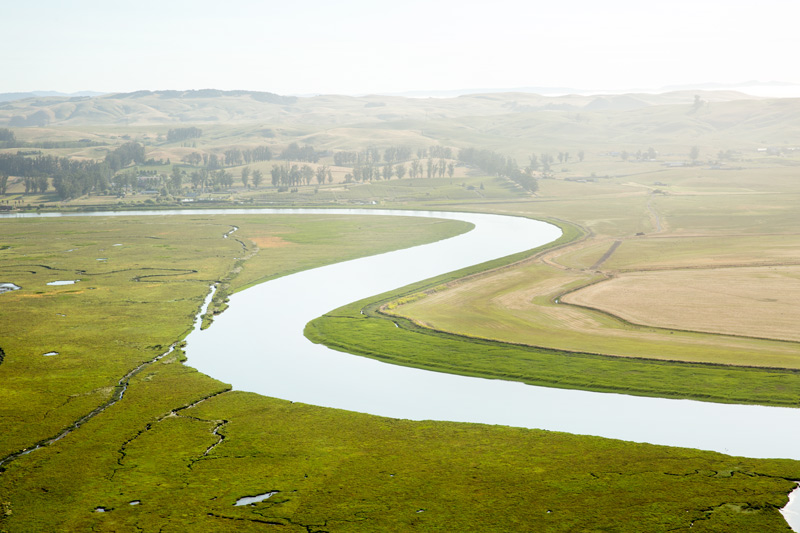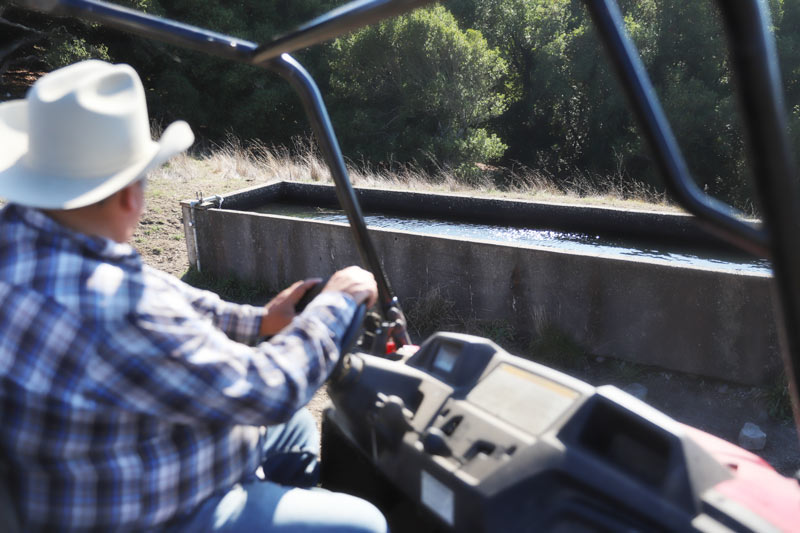What’s Beyond the 30×30 Initiatives?

By Lily Verdone,
Executive Director
May 2, 2023
THIS OP-ED FIRST APPEARED IN THE MARIN INDEPENDENT JOURNAL.
I’m lucky.
My job as the director of a community-based land trust gives me the opportunity to stand on top of some of the tallest mountains in Marin and to take in breathtaking vistas – rolling farmland, protected forests, the baylands, and the wild Pacific. More importantly, this big picture view allows me to see connections including those between protected natural and working lands and our ability to build climate resilience in the region.
This year I also witnessed how record drought followed by extreme winter storms impacted our farmers and ranchers, stressed our landscapes, and overwhelmed our infrastructure. A recent report of the Intergovernmental Panel on Climate Change (IPCC) speaks to this – even as we are seeing more funding committed to climate adaptation, it isn’t enough. Climate adaptation efforts are too scattered and are leaving behind some of the most vulnerable communities.
Protecting land offers hope. Like the Marin Agricultural Land Trust (MALT), nonprofit land trusts across the country are working to protect critical natural and working lands. According to the Land Trust Alliance, land trusts have already conserved more than 61 million acres of private land across the nation, which is more than all of the U.S. national parks combined.
 Both the federal and state 30×30 initiatives aim to protect 30% of all land and water by 2030 — essential work to protect our communities from the worst impacts of climate change.
Both the federal and state 30×30 initiatives aim to protect 30% of all land and water by 2030 — essential work to protect our communities from the worst impacts of climate change.
But land protection is not enough; we also need to better steward privately protected lands because healthy landscapes can sequester and store carbon, reduce future greenhouse gas emissions, and build resilience from climate impacts like drought, flood, and fire. Healthy landscapes include agricultural lands. Approximately 50% of land in Marin County is privately-owned agricultural land, which means we have a tremendous opportunity to promote a local economy, and address climate change and natural resources protection through voluntary, private lands conservation.
Another existing framework to accelerate climate solutions is public policy, specifically federal and state goals to protect at least 30% of lands and water by 2030 (30×30 initiatives). The goals of 30×30 are to safeguard health, food supplies, and biodiversity at the local, state, and federal level. Over the last 43 years, MALT has protected over 55,500 acres of farmland in Marin and is on track to protect many thousands more acres with the support of our community. We also acknowledge that more needs to be done. Once land is protected, we need to steward it in ways that build climate resilience, protect biodiversity, and connect communities.
What does stewarding protected agricultural land look like? A range of on-the-ground practices can be done in partnership with hard-working ranchers and farmers who are built-in land stewards. It can be as simple as planting hedgerows, fencing for rotational grazing, or applying compost to pastures to improve plant growth and conserve water. It can be multi-year partnerships to restore a watershed from headwaters to sea. It can be regional collaborations to improve soil health to retain more carbon.
 MALT’s Drought Resilience and Water Security (DRAWS) initiative is an example of a nimble small grants program that supports climate resilience at the social, biological, and economic level.
MALT’s Drought Resilience and Water Security (DRAWS) initiative is an example of a nimble small grants program that supports climate resilience at the social, biological, and economic level.
This past April, we reached the two-year milestone of a small grants program to build resilience against drought and improve water security. In partnership with ranchers and farmers and other funding agencies, we’ve developed fresh water springs, installed storage tanks and troughs, and connected more than 14 miles of pipes. Nimble small grant programs like this can be a model for advancing the stewardship of our agricultural lands in ways that build climate resiliency and protect natural resources.
With the memories of my view from the top of the mountain in mind — the rolling green hills and the deep forests — I see connections: continuous acres of protected farms and open space, the synergy between agricultural lands and climate resilience, local conservation and global climate change. I know I am in good company, with close to 1,300 land trusts in the United States refreshing strategies to help communities become more resilient to climate change impacts.
The most recent IPCC report is fundamentally a call to action, and now is the time to not only commit to protecting land to meet the 30×30 goal, but also to go beyond and double down by investing in the stewardship of agricultural lands in ways that build climate resilience, protect biodiversity, and create community connections.